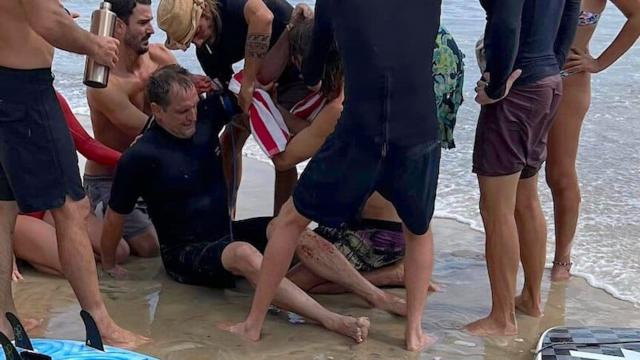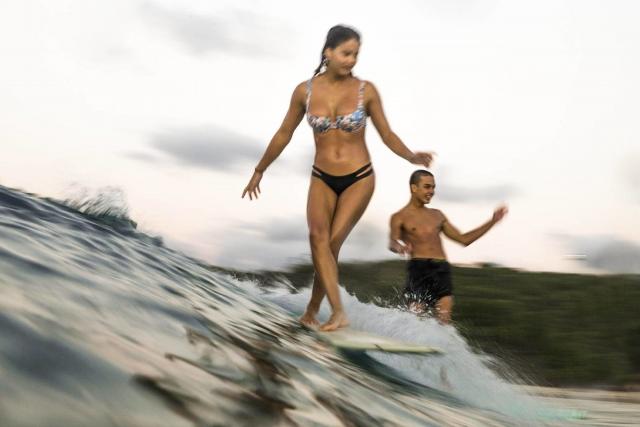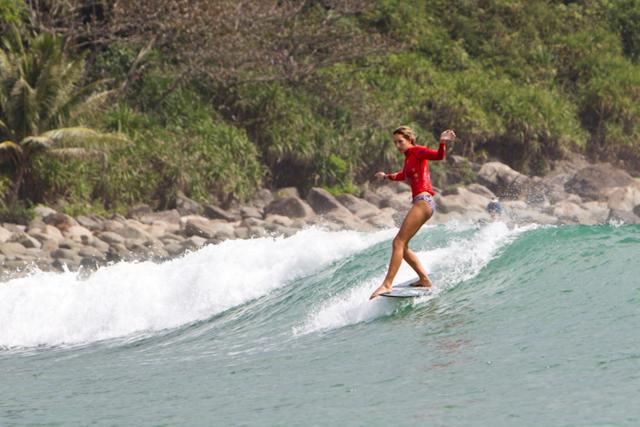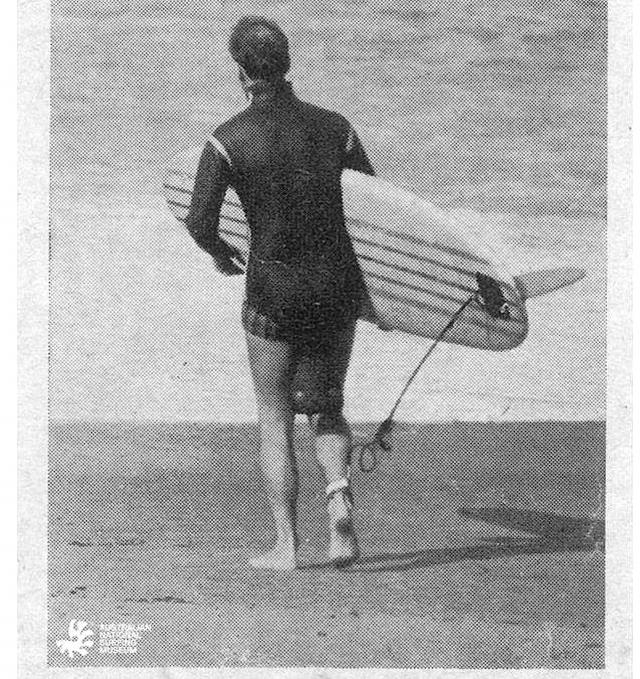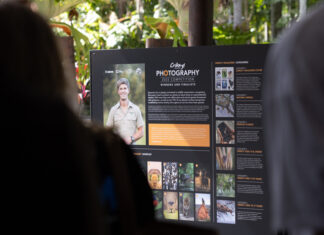Matthew Cassidy, 49, apparently a very good surfer who once dabbled with the pro tour, nearly bled out on the sand at Watego’s Beach in Byron Bay last week after his arm was almost severed by a loose longboard, so I guess it’s time to address the elephant in the lineup again.
The mal’s fin cut deeply into Cassidy’s upper arm through arteries and it was only the surfer’s quick response in explaining to first responders how to fashion a tourniquet from a leg rope that saved the arm and probably his life.
While nothing of such gravity has happened during our February run of great waves on the Noosa points, there have been numerous reports of minor injuries and near misses from loose longboards in the lineup.
For anyone who started surfing pre-leash, just loving the freedom to dance along the deck without restriction, and for whom that feeling has never gone away, it’s difficult to even contemplate compulsory legropes.
But as the crowds get bigger and more novices follow the hipster lead and venture out unleashed in powerful waves, you have to wonder if there is any other way to go.
As Matthew Cassidy told the ABC: “The Pass is full of kids, and I think there have been four incidents outside of mine in the last month or so.
“How do you look your wife in the eye if you’ve knocked a kid out just because you didn’t want to wear a legrope?”
It’s not a new argument, but it’s getting more critical.
About six years ago, following yet another serious loose board incident, I tried to put it in historical perspective for a surfing magazine:
Let’s start at the start. Matt Warshaw’s Encyclopedia of Surfing credits pioneer surfer and designer Tom Blake with experimenting with a 10-foot length of rope secured between his board and his waist-belt in the mid-1930s, which makes sense given Blake’s obsession with futuristic design concepts and surf safety, and yet there is no mention of such a device in his 1935 book Hawaiian Surfboard. Possibly, like later leg rope pioneers, Blake found that being tethered to your board did not always have desirable outcomes.
The next surfer known to have experimented with tying himself to his board, some 20 years later, was also a designer of lifeguard devices. Georges Hennebutte, an industrial designer and part-time inventor, first saw a surfboard ridden at la Cote des Basques in Biarritz in 1956 by the Hollywood screenwriter Peter Viertel, who was filming the Hemingway classic, The Sun Also Rises, just across the border at Pamplona.
3Viertel was a better writer than a rider, and he soon lost his board and smashed it against the seawall. Hennebutte offered to fix it for him, and he, Michel Barland and Jackie Rott took a plan shape off it, made their own, and became the founding fathers of surfing in France.
But Hennebutte’s passion for invention led him to ponder how he could prevent damaging his board on the many rocks and seawalls of Biarritz, and in 1958 he came up with le fil à la patte, the “thread to the paw”, which secured a length of elastic to his board and either his wrist or ankle, depending on how lucky he felt. His surfing mates ridiculed him, but Hennebutte persevered alone through the ‘60s.
Meanwhile, in Santa Cruz, California, teenaged Pat O’Neill, with a lot to live up to since his dad, Jack, had more or less invented the wetsuit, effectively re-invented the “thread to the paw”, using a suction cup on the nose of his board and a length of surgical tubing secured to his wrist.
O’Neill’s original idea was that the handheld device would also help push the board through tighter arcs, in which it failed miserably. O’Neill soon modified his design to connect ankle to tail, but the project suffered another setback when the legendary Jack O’Neill lost the sight of his left eye when Pat’s leggie invention sent the board hurtling back at his head at great speed.
Although Jack O’Neill losing an eye was a crushing blow for the emergent leg rope market, it was by no means an isolated incident, but the mounting evidence that the primitive rubber leggie was a potential risk to life and limb was of only secondary concern to the marketing guys. Their real problem was the same surfing machismo that had plagued M Hennebutte for the previous decade – leggies were for kooks and nancy-boys. Good surfers didn’t need them.
The leg rope was first manufactured in Australia in Byron Bay in 1973, and while there were no doubt plenty of early adopters, I had never seen one when I left that year for my first overseas surf trip, and I never saw one while surfing from Cornwall through France, Spain and Portugal.
Still blissfully ignorant of the kook cord, I arrived in Bali the following year and noticed, as our crew prepared for a first surf, that I was the only one without the means to attach himself to his board. Within 24 hours, and before our first bemo ride to Uluwatu, I had turned that around.
Which brings us full cycle, back to the future, with bushranger-bearded and leggie-less loggers evoking strong emotions at crowded summer surf spots.
In the blogosphere the argument runs hot and cold, flaring every time a child cops a loose board in the moosh. And when that happens, it’s hard to argue against attachment. But here’s a confession. Having begun my surfing life leggie-less, I am now ending it the same way.
But I’m not any more. The above was written six years ago. Recognising that old age slows reaction, I now strap on before surfing the points, and only on the smallest beach break days do I allow myself that intoxicating freedom.

